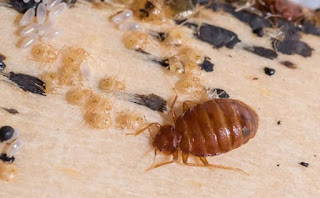Spring Cleaning Pest Control Tips
Warming temperatures and increased rain, starting from March through May, results with insects such as ants, sow bugs, earwigs, flies and of cause mosquitoes to spring into action. Ticks and fleas are a major concern as well due to the relatively warm winter in which they survived. Rodents like mice and rats add to the problem as they are always happy to invade homes and businesses year-round.
What can homeowners do to protect their family and friends from these pesky, disease carrying invaders? What can business owners do to protect their employees and/or customers?There are three things that insects and rodents need for survival and to reproduce, they are:
1. Food
2. Water
3. Shelter
Let's begin with food. Insects and rodents are small, so it doesn't take much to satisfy their hunger. If you keep garbage cans and/or dumpsters clean and keep the lids on them, pest will be forced to find food somewhere else. It's even helpful to have dumpsters and garbage cans treated at least once a month during the spring and summer as an added protection.
Replace cans and lids if they have holes in them. Holes in the lids not only allow access but allows rainwater to collect in the cans which can result in a breeding area for mosquitoes.
Let's consider water. Insects and rodents thrive when water and moisture are readily available, in fact like humans they can go longer without food than water. Eliminating water and moisture around the foundation, crawlspaces, basements and attics is very important. Take a look at the condition of your downspouts as an example.
If your downspouts are damaged or not working properly, water can accumulate around the foundation and slowly seep down into the basement creating an excellent environment for insects and rodents to breed. Even if you don't have a basement water sitting around a slab on grade brings insects of all types. Downspouts should extend at least six feet. Additionally, the grading around a structure should have enough of a slope so rainwater can drain away. Also make sure gutters are clean, free of leaves and dirt, and properly in place.
Finally let's take a look a shelter. Outdoors, rodents have to move about undercover, that's because they're constantly hunted by predators like birds and cats. Keeping grass cut low and eliminating weeds will help keeps rodents at bay. Low cut grass and a weed free perimeter makes them easily seen by predators and so will discourage them from coming around the property. Keeping firewood away from the exterior walls will help reduce termite and carpenter ant infestation. It's wise to keep the perimeter of the structure as dry as possible, so remove items that will create a cover for insects and that holds moisture.
Cutting vegetation back at least one foot away from the structure will also keep rodents and insects from invading your home or business.

Be aware of wood mulch. Wood mulch looks nice and enhances the appearance of plant beds. It's also great for plants as wood mulch retains moisture to the plant's roots, thus reducing the need for watering, but it also attracts wood destroying insects. Having wood mulch treated with Eco friendly products monthly helps reduce wood destroying insect infestation.
Keeping pest away takes a little time and effort. If you want to keep spring and summer pest from taking over your home or business, then spring maintenance is not an option. Your local pest control professional will also be happy to give you tips and help with any pest control needs or concerns you may have.
Labels: DIY, home inspections, pest control, spring


















